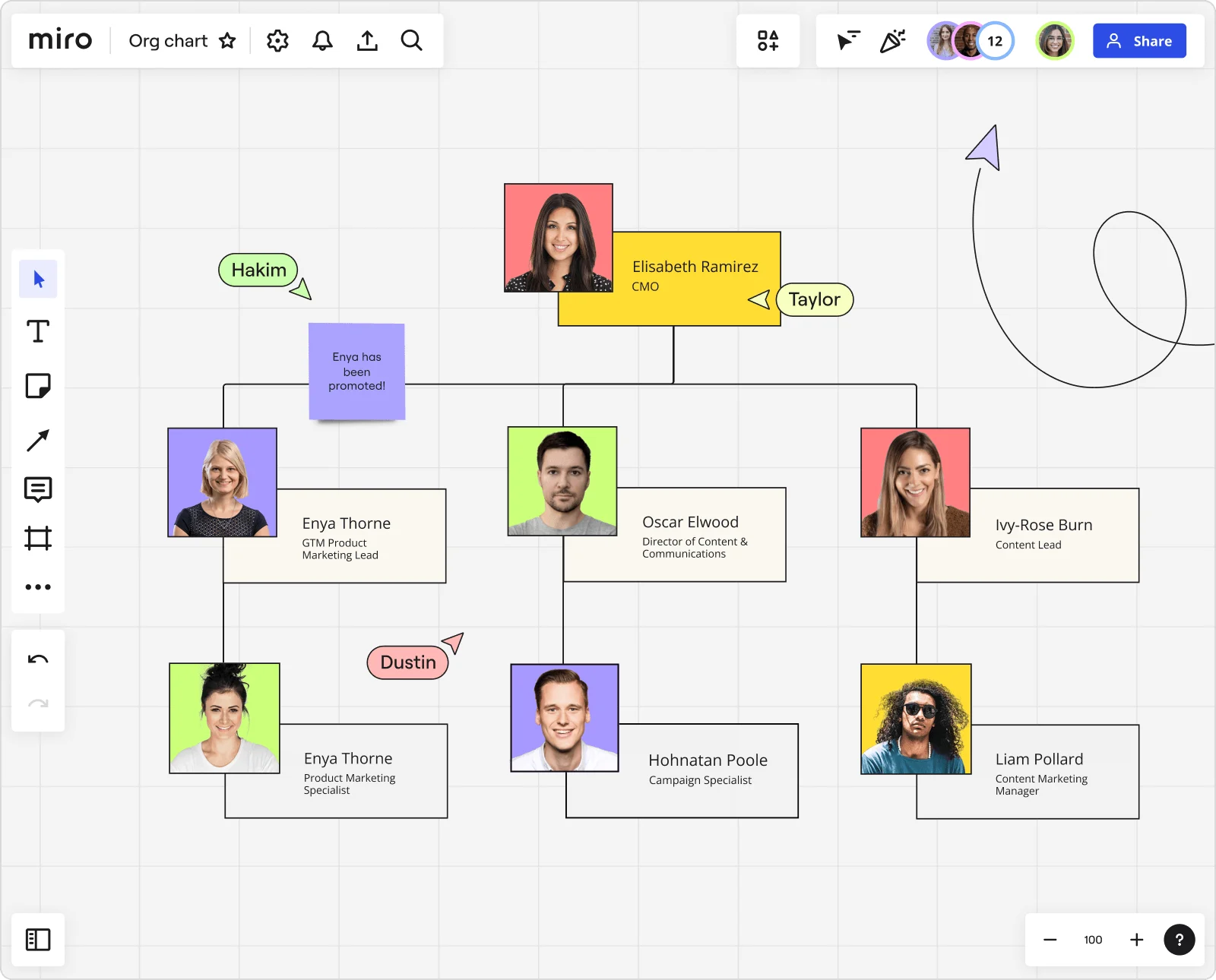
How to achieve organizational effectiveness

Summary
In this guide, you will learn:
Importance of communication for organizational effectiveness
How to assess your organization's current state
Role of clear business objectives in strategic direction
Using Miro’s tools for streamlined assessment
Value of regularly reviewing and updating structures
How visual collaboration platforms like Miro support effectiveness
Try Miro now
Join thousands of teams using Miro to do their best work yet.
Knowing how to achieve organizational effectiveness is more crucial than ever. It's not just a nice-to-have; it's a necessity for long-term success. This comprehensive guide aims to arm you with the actionable strategies and insights needed to successfully gain organizational effectiveness.
If you want to know how to achieve organizational effectiveness, it's essential to first understand what the term actually means. Organizational effectiveness is the measure of how well an organization is meeting its goals and objectives. This may sound simple, but achieving it requires a well-thought-out blend of culture, processes, and leadership.
Key Components
The pillars that support organizational effectiveness include:
Goals and Objectives
Processes and Systems
Culture and Leadership
Performance Metrics
Importance of Organizational Effectiveness
If you're keen on understanding how to achieve organizational effectiveness, you must grasp its importance. A focus on organizational effectiveness offers a competitive edge, leads to employee satisfaction, and drives robust financial performance.
Assessing the Current State of Your Organization
Achieving organizational effectiveness begins with a thorough assessment of your current state
Analyzing Business Objectives
Understanding your business objectives is the first step in the roadmap of how to achieve organizational effectiveness. Be it expanding your customer base or increasing operational efficiency, clear goals set the stage for the strategies that follow.
SWOT Analysis
A SWOT analysis is crucial for identifying your organization's Strengths, Weaknesses, Opportunities, and Threats. Use Miro's SWOT Analysis tool to streamline this process and gain comprehensive insights into your organizational landscape.
Performance Metrics
Key Performance Indicators (KPIs) can offer critical insights into your current effectiveness. Monitoring these metrics is an integral aspect of achieving organizational effectiveness.
Strategies for Achieving Organizational Effectiveness
We will explore a variety of actionable strategies that are key to achieving organizational effectiveness. From aligning operational practices to fostering an open culture, these methods will guide your organization toward peak effectiveness.
Alignment with Business Goals
Every department and team within the organization must be in alignment with the overall business objectives. This harmonious alignment is fundamental to achieving organizational effectiveness.
Implementing Agile Processes
In the ever-changing business environment, agility is not just a buzzword but a requirement for organizational effectiveness. Agile methodologies emphasize rapid, iterative cycles and flexibility to adapt to new circumstances.
Enhancing Communication and Collaboration
Communication is the backbone of organizational effectiveness. Create an environment where employees can freely express their ideas and collaborate effortlessly.
Talent Management and Skill Development
One cannot stress enough the importance of having the right talent when discussing how to achieve organizational effectiveness. Improve your organizational design, invest in hiring practices, and continuous skill development to meet and exceed organizational goals.
Technology and Automation
Effective use of technology can be a game-changer in achieving organizational effectiveness. From automating mundane tasks to employing data analytics, technology offers endless possibilities for improvement.
Monitoring and Measuring Organizational Effectiveness
It's vital to constantly measure and monitor your performance. Setting benchmarks, conducting reviews, and establishing feedback loops will help in the ongoing refinement of your strategies.
Setting Benchmarks
Clearly defined benchmarks serve as the yardstick for measuring the effectiveness of your organizational strategies.
Quarterly and Annual Reviews
Regular reviews, both quarterly and annually, provide an opportunity to reassess and recalibrate your approach to achieving organizational effectiveness.
Feedback Loops
Implementing feedback loops with employees and other stakeholders provides a unique perspective that can greatly enhance your strategies for achieving organizational effectiveness.
Conclusion
Knowing how to achieve organizational effectiveness is a continuous process that demands commitment, flexibility, and adaptability. Every element—from setting explicit goals to iterative cycles of feedback—contributes to building a more effective and resilient organization. By being proactive and open to change, you pave the path for long-term success.
Author: Miro Team
Last update: October 10, 2025